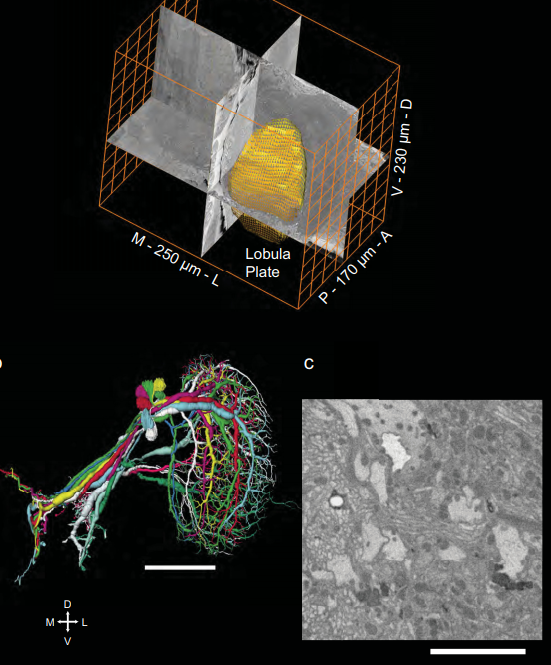Full reconstruction of large lobula plate tangential cells in Drosophila from a 3D EM dataset

With the advent of neurogenetic methods, the neural basis of behavior is presently being analyzed in more and more detail. This is particularly true for visually driven behavior of Drosophila melanogaster where cell-specific driver lines exist that, depending on the combination with appropriate effector genes, allow for targeted recording, silencing and optogenetic stimulation of individual cell-types. Together with detailed connectomic data of large parts of the fly optic lobe, this has recently led to much progress in our understanding of the neural circuits underlying local motion detection. However, how such local information is combined by optic flow sensitive large-field neurons is still incompletely understood. Here, we aim to fill this gap by a dense reconstruction of lobula plate tangential cells of the fly lobula plate. These neurons collect input from many hundreds of local motion-sensing T4/T5 neurons and connect them to descending neurons or central brain areas. We confirm all basic features of HS and VS cells as published previously from light microscopy. In addition, we identified the dorsal and the ventral centrifugal horizontal, dCH and vCH cell, as well as three VSlike cells, including their distinct dendritic and axonal projection area.